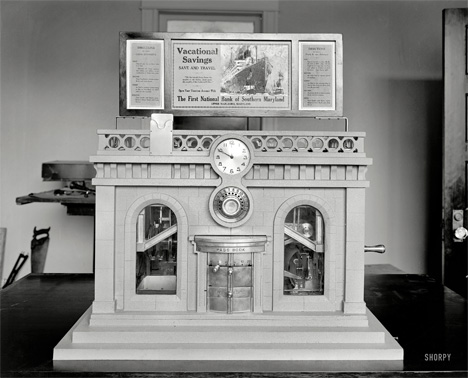
ATMs are kind of like pigeons these days: they’re everywhere you look in urban settings. The high-tech electronic bankers are a relatively recent invention, but we’ve quickly come to count on them. Way before the ubiquitous ATM there was this curious banking machine dating all the way back to 1918. It was called an automatic receiving teller – and if it wasn’t made obvious by the name, this machine only accepted deposits and could not help with withdrawals. This type of machine was used in schools and other organizations in the 1930s to encourage people to save their money by making frequent deposits to their savings accounts.

The machine works simply enough but at the time must have seemed like a marvel of machinery. If the customer wanted to deposit coins, the machine could tell what type of coins were being inserted (in the same way modern vending machines use the weight to tell the difference between coins). But customers depositing paper money had to actually set the slide dial on the machine to the amount they were depositing before telling the machine to stamp their bank books. We have to wonder how many people in the 30s tried to beat the system by tricking the machine into making their bank accounts look artificially flush.

